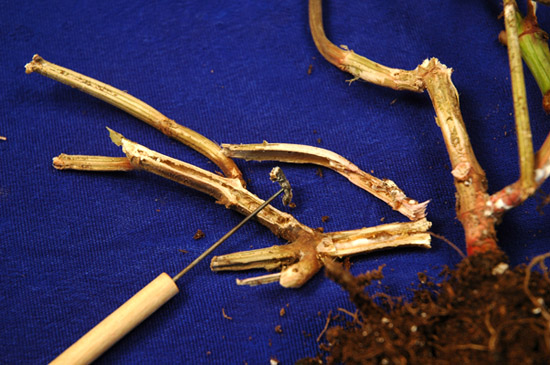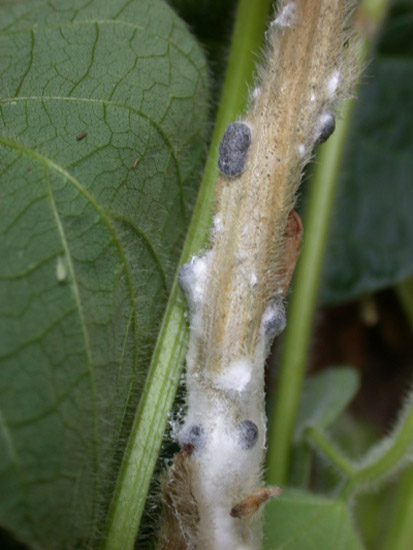Issue 11, July 2, 2009
White Mold Weather
White mold is the common name for a fungal disease that occurs in very wet conditions. Other common names include watery soft rot, cottony rot, and Sclerotinia disease. The disease generally becomes most prevalent in areas where vegetative growth is dense, air movement is restricted, and the soil stays wet longer than normal. Heavily irrigated areas may have this problem even when rainfall is short. Dense, wet areas have occurred throughout much of Illinois this planting season.
There are three fungal species that cause this disease: Sclerotinia sclerotiorum, S. minor, or S. trifoliorum, but you won't be able to distinguish the species in the field. These fungi may infect hundreds of plant species. Look for the disease on aster, begonia, columbine, dahlia, delphinium, larkspur, peony, snapdragon, and other garden plants. Vegetables such as bean, carrots, tomatoes, and peas are hosts, as well as soybeans and some woody plants.
Symptoms of white mold may occur on any above or below ground portion of the host plant. Look for tan or bleached lesions which become covered with a fluffy white mycelial growth (mold). This growth is very white and wispy when compared to the dense, gray mold of Botrytis. White mold appears most commonly on stems. Stem tissue dies from the site of infection to the tip of the stems. As the disease develops you will see large, black resting bodies of the fungus that look much like irregular rabbit pellets. These resting bodies are called sclerotia, and they are composed of tightly packed mycelia. They will grow in or on the plant tissue. The fungus can survive many years as sclerotia buried in the soil. The first image shows a salvia plant infected with white mold. A sclerotium was removed from inside the stem and is indicated on the probe. Often the sclerotia are seen on the outside of the stems, as seen in the second image. Although black on the outside, these resting bodies are white internally. The presence of sclerotia, white mold, and bleached stems confirms this disease. As the infected plant tissue dries, the white mycelium may dry up or disappear, but the stem will still be bleached or tan as if it were grabbed by a very hot hand or glove. The infected stem is generally hollow.


This disease is discussed in University of Illinois report on plant disease #1008, Sclerotinia Disease, White Mold or Watery Soft Rot. Correct identification of the white mold disease is important to disease control. The resting stage may remain in the soil for many years, causing problems at that location on many other hosts. Sclerotia in the top 2 to 3 inches of soil germinate each year given conditions favorable for the fungus. There is no cure for infected plants. They wilt, collapse, and die rather quickly. When replanting, choose nonhost crops for the infected area. A list of plants susceptible to this disease is provided in RPD 1008.--Nancy Pataky
Author:
Nancy Pataky